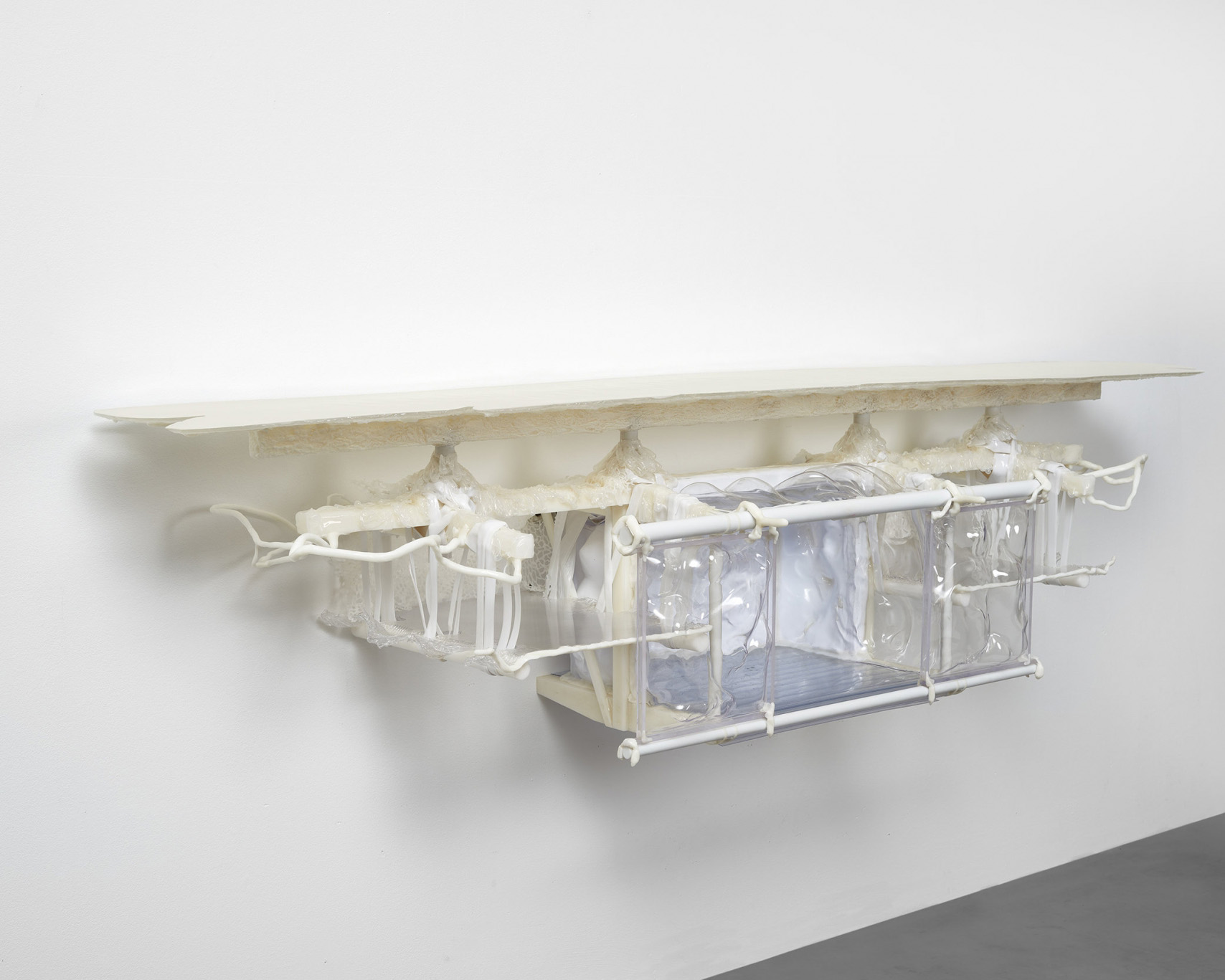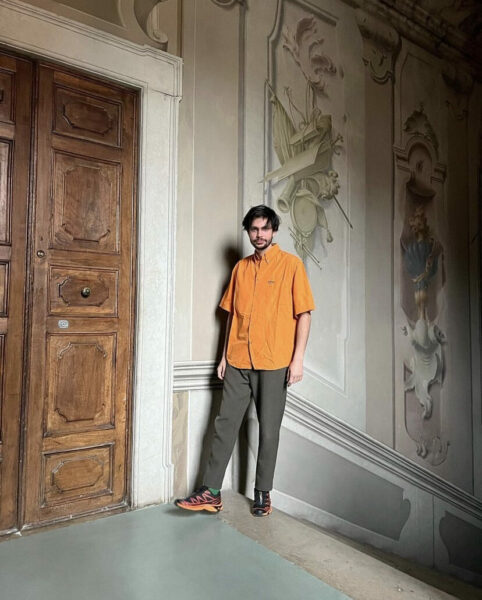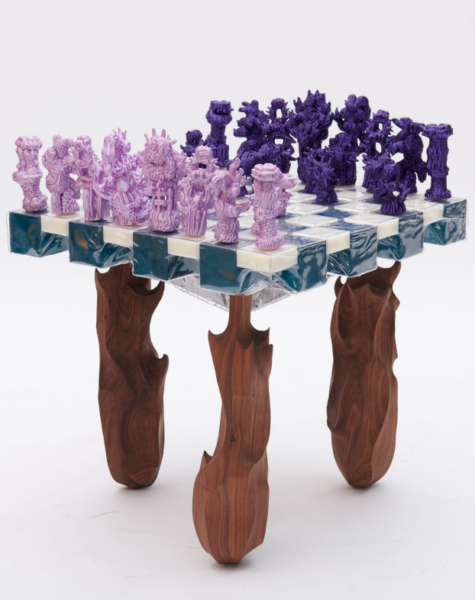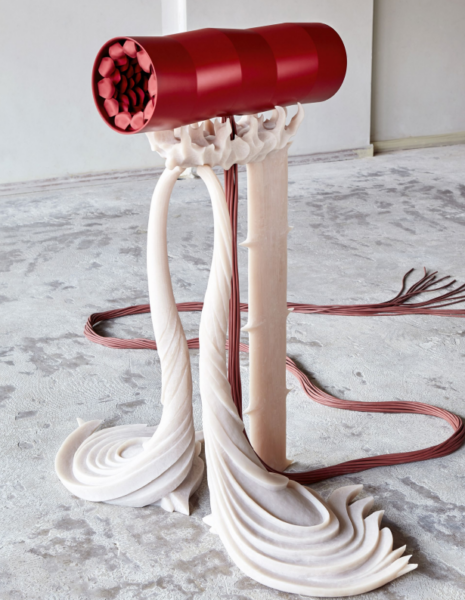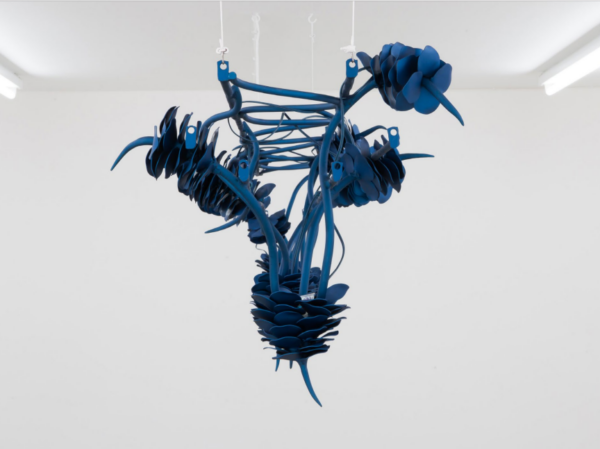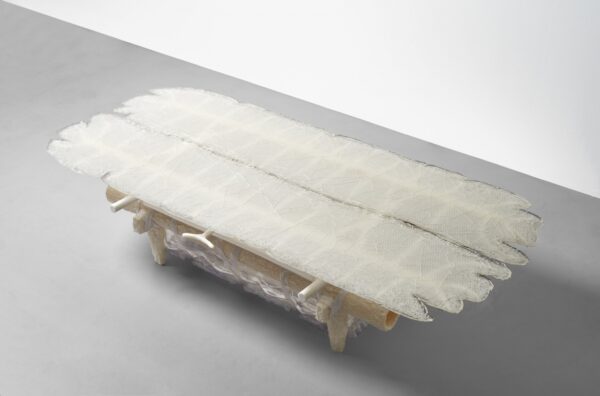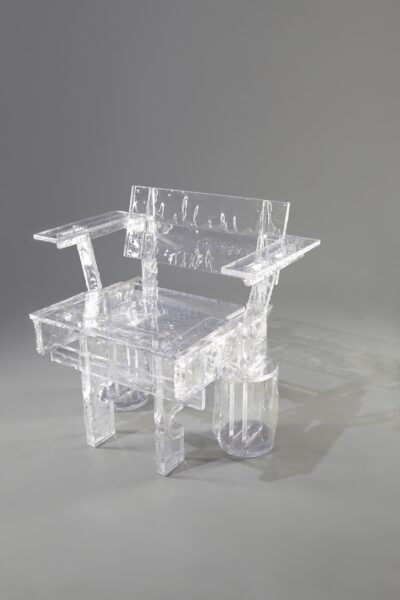In Théophile Blandet’s (1993, France) practice he focuses on new processes, skills and technologies. He focusses on the subversive value of plastic. Blandet’s work revolves around materials that will no longer exist in the future – such as plastic, which he believes will be banned due to its negative impact on the environment. He sees plastic as the new ivory, a material whose use has already been restricted. Blandet consciously uses primitive tools and techniques.
For his second exhibition at the gallery, Théophile Blandet (1993) created a theatrical installation, comprised of objects that “don’t care to tell you what they are”. Self-sufficient, autonomous, at the same time connected, forming secret alliances with each other – the objects defy each effort at categorisation. There are references to the familiar props of our daily lives, which suddenly lead a life of their own, such as the chair that folds up into a sculpture, the tea set that has become a fountain. They evoke questions on that which usually escapes from attention, which writer Georges Perec labelled as the ‘infra-ordinary’. According to Perec we need to question “what has ceased forever to astonish us”, hinting at the very objects and daily rituals that Blandet turned into abstract sculptures.
Many artists refer to quotidian life, to the habitual, the banal, and use domestic objects in their work as they enable to play with multi-layered meanings. Blandet’s work differs from these endeavours, as he keeps intact the idea and promise of functionality. He connected for instance precisely crafted figurines of swans and clever interlocking systems to two abstract forms, by which the spectator can intuit how these might be linked and become one table. He plays with the imaginative power of forms and seemingly bids his farewell to function; at the same time, he does not abstain from the possibility of practical use within a different context. What stands out is each object’s materiality and refined detailing. The used materials range from traditional art materials, such as clay, to materials that refer to industrial production, such as steel and aluminium, and the waste material of consumer society, plastic. With great skill, Blandet creates contrasts, plays with expectations and reverses traditional meanings and values. With his sculptures made of plastic he does not plead for sustainable reuse, as many do these days, but suggests to acknowledge the higher value of this maligned material. Vilified, banned, and will some day thus become rare and precious. Plastic is the future gold.
